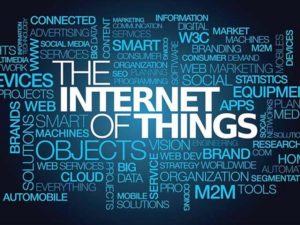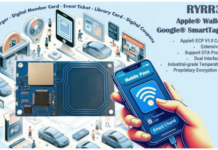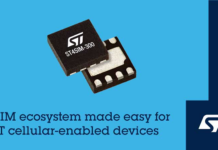
Our catchy title might have grabbed your attention, but it lacks something. What’s missing is nothing short of the sine qua non: analysts who have the right tools and know how to use them in order to join the revolution.
Here’s what we mean and where we are going. The IoT sends an enormous amount of data (Big Data) to the cloud where it can be accessed by marketers. That’s step one, but one that by itself won’t yield a single marketing benefit. The essential second step is analyzing the data properly, so it can be employed in effective marketing, sales and CRM.
If marketing is your profession, then your goal is to translate data collected by the IoT into productive marketing. Your level of training in analytics software products will make or break your ability to do this.
Note: Our focus here is on the marketing done by companies using data garnered from the IoT. There are other ways that the IoT is being used in marketing. For example, a gift such as a bottle of wine might have a smart tag as part of its packaging. The purchaser could use a smartphone to record a message of congratulations or happy holidays to go with the gift and transfer it to the smart tag. The recipient of the gift could then view the message on a smartphone. As we’re seeing daily, the potential of combining marketing and the IoT is just starting to be realised.
The IoT and Big Data
There was a time not so long ago when accessing the Internet meant making a conscious decision and taking a definitive action such as logging in. That method is fading, quickly being overtaken by an ecosystem in which smartphones and their apps, computers, automobiles, refrigerators, smart home hubs, thermostats, medical implants, security systems, surveillance cameras, fobs, wearables, clothes washers, watches and a growing number of other objects are always connected.
The IoT was envisioned by innovators like Andy Hobsbawm, the CMO of smart device IoT platform Evrything. He wondered, “Why couldn’t the physical world be online and referenceable, searchable, mashable just like other forms of digital information? We [he and Evrything co-founder Niall Murphy] both felt strongly that the Web will inevitably include billions of objects sharing dynamic information about themselves in real-time.”
The IoT raced past the billion point and is expected to reach 50 billion “things” by 2020, a figure predicted by Ericsson in 2010 and echoed repeatedly and even increased by some.
Marketing in the IoT Age
The Big Data gathered by IoT includes the demographics, psychographics, news-gathering habits, shopping interests and habits, search interests, preferences and similar behavior of the person using the connected object.
Big Data is not one big mine, but a series of smaller mines representing the store of data each individual company drills into for information on individual users. The data is then used to customise a marketing strategythat will most appeal specifically to each customer.
The information you and your things generate can end up in several mines, however. For example, if you use your iPhone to search for shoes on Amazon using Google, all three companies have the information and might use it in tailoring the marketing goods and services to you.
Making Sense of Big Data: The Power of Analytics
The number of ways data can be used in marketing is mind-boggling. Consider several examples, and you’ll be able to configure as many more as you like:
- Your car’s sensor indicates that your engine oil is dirty, and you get a text with the notification and a coupon code for a nearby oil-change centre
- You enter a QR code into a restaurant’s scanner by passing your phone in front of it, and a custom menu is presented to you that reflects your preferences and requirements (vegetarian entrees, Italian cuisine, French wines, free-trade coffees or gluten-free desserts, for example).
The mass of data is simply too big to mine without putting analytics software to the task. The software tracks, accumulates, categorises, applies algorithms, employs data science and performs a multitude of additional tasks to help the marketer decide that:
- Customer A might very much like Goods B and Services C offered to her on Devices D and E
- Customer X fits the psychographic profile of a person likely to purchase product Y for herself and product Z as a gift, and markets them accordingly
Improving your Analytics Game
Here are three types of software any marketer should have in the toolbox. What these tools can do is amazing. However, as is true with most complex software products, those most skilled in using them reap the greatest reward. That’s why companies are investing in analysts that have the tools and know how to use them. Those analysts are an asset from the first day on the job.
Marketing automation software: Automating tasks such as sending marketing through text or email, managing a blog, tracking keywords or measuring the success of marketing campaigns is a time-saver for sure, but its greater value is in keeping you in touch with real and potential customers in highly effective ways.
Customer Relationship Management (CRM) software: CRM software builds strong relationships between companies and their customers to produce loyalty, responsive customer service and a higher volume of per-customer sales.
Social media software: These products help companies maximize their presence on social media platforms in many ways including managing their posts, dispersing good reviews and highlighting and/or rewarding people with positive things to say on social media about the company.
Joining the Revolution
As we’re seeing daily, the potential of combining marketing and the IoT is just starting to be realised. Uber was one of the first brands to take advantage of it. Uber’s success happened so fast and so big that only a few companies like Lyft have arisen as serious competitors, and those that have are way behind. Success like Uber’s is happening in large and small ways in every industry, but companies succeeding in the IoT-enabled marketing are those that have made the investment in analysts that well equipped with the tools and well prepared with the training required to use them effectively.


















